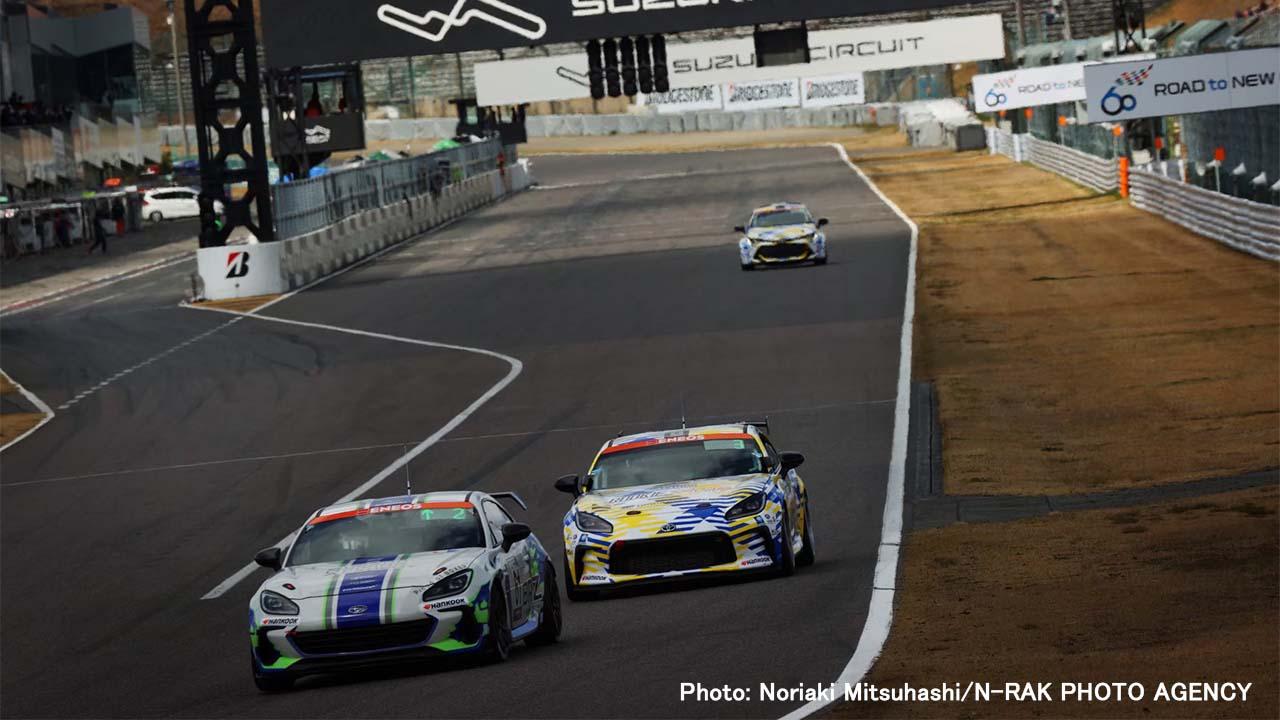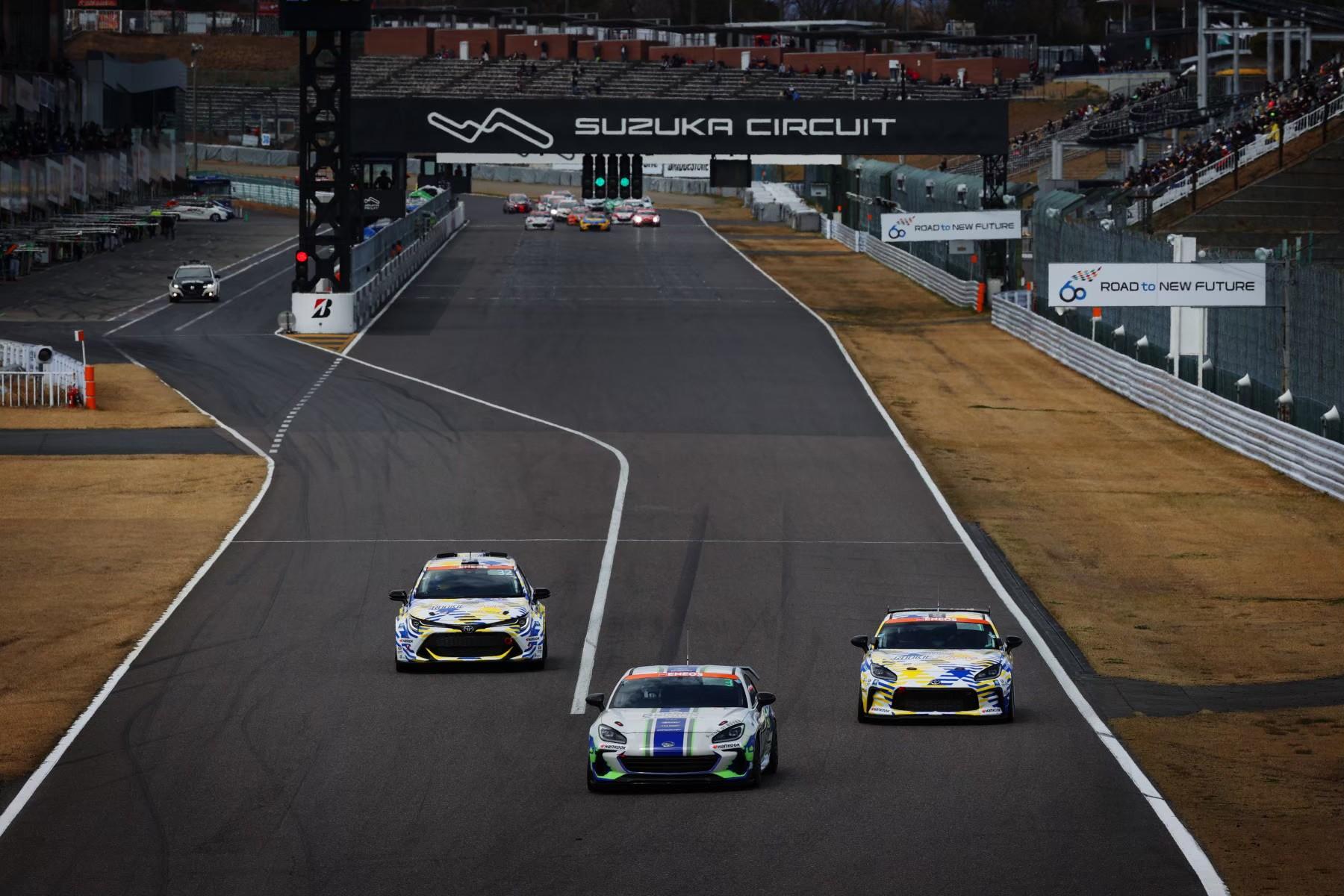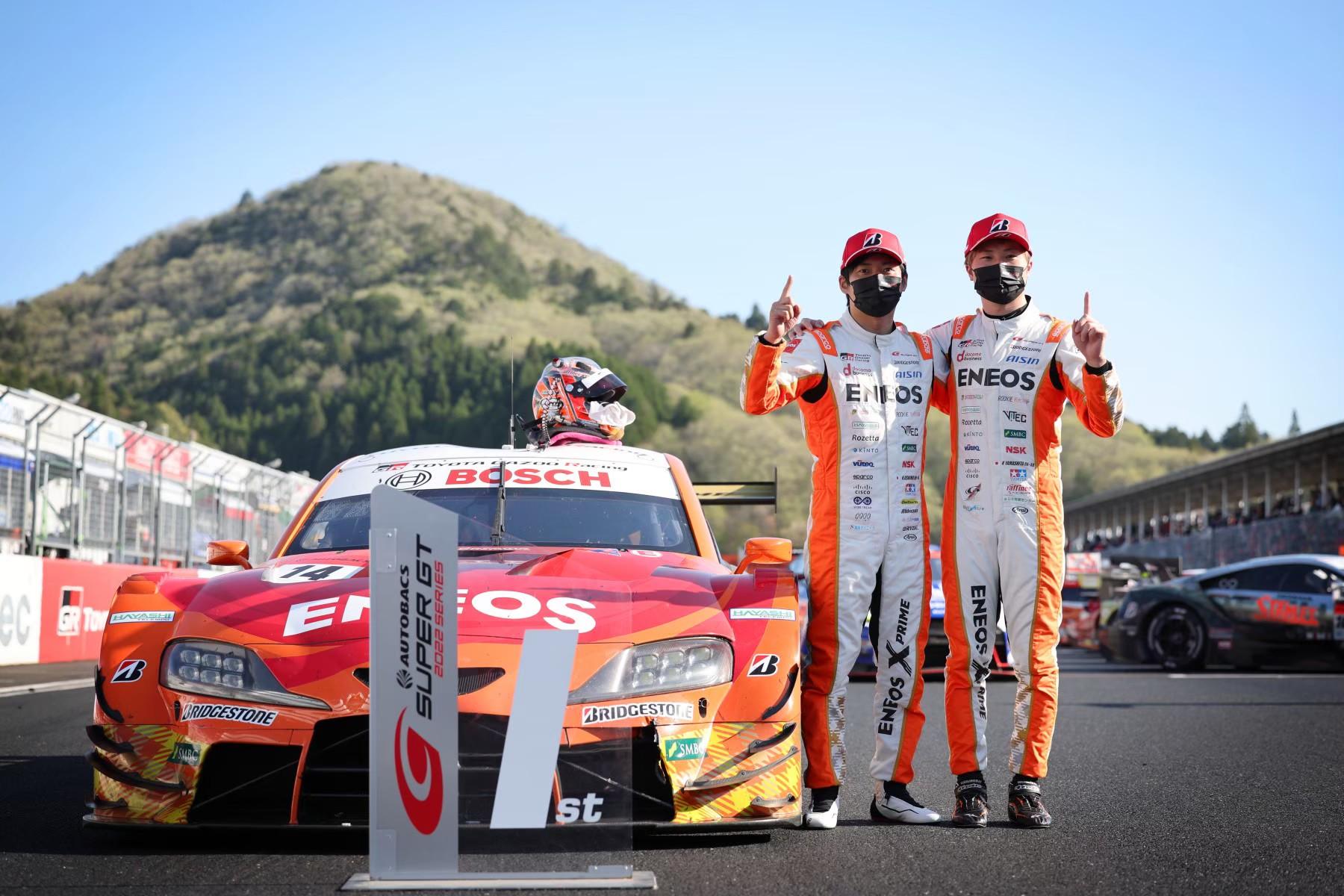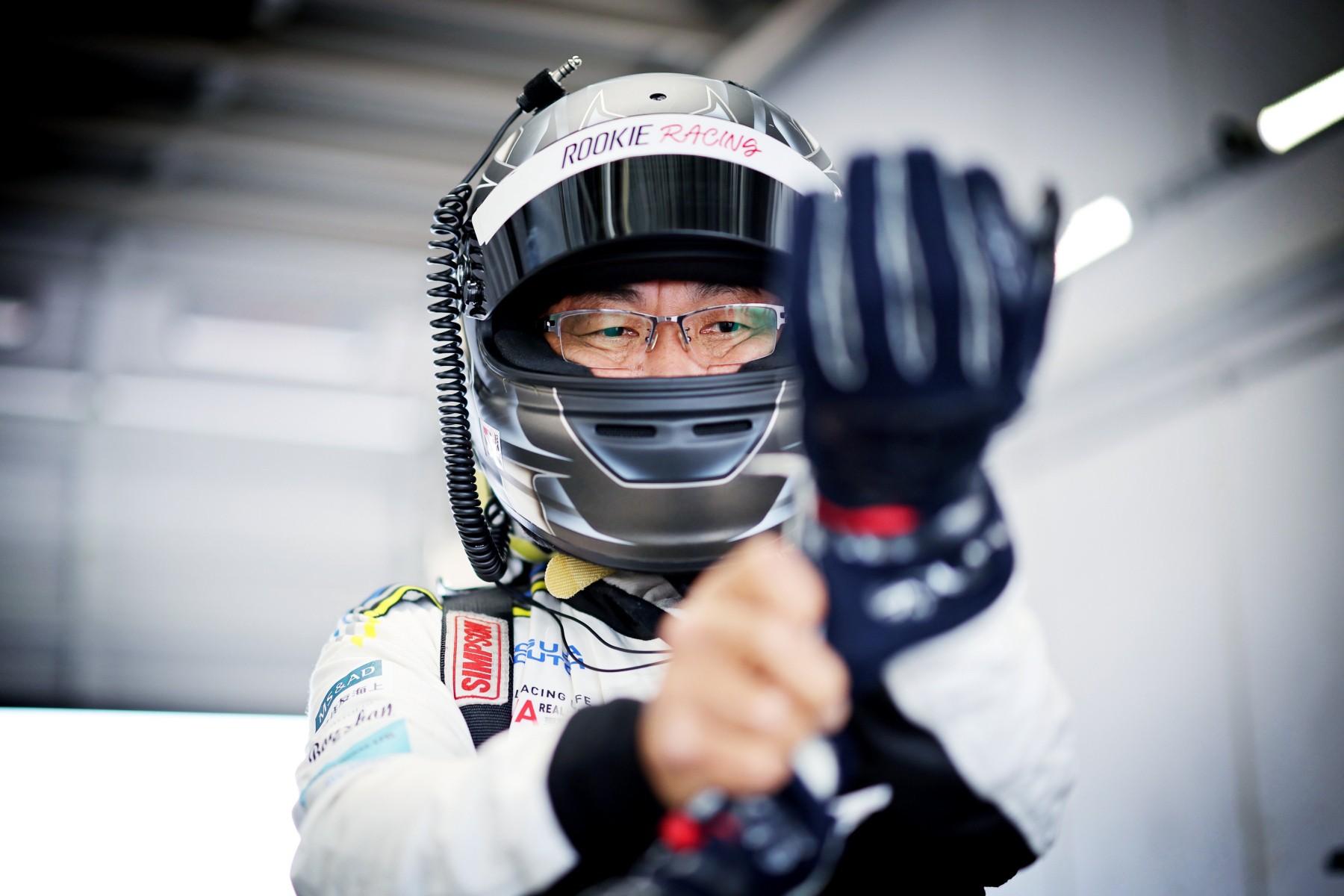
Toyota Times breaks down four key points for watching the 2022 Super Taikyu Series Fuji 24-hour race.

The Fuji 24-hour endurance race, the 2022 Super Taikyu Series Round 2, is set to start on June 3. Toyota Times breaks down what to look out for ahead of the big event.
Point 1: New ST-Q class challengers
Super Taikyu cars are divided into classes based on engine size and modifications. The ST-Q class has been Toyota Times’ focus, as it’s home to the hydrogen-powered Corolla and other in-development manufacturer cars.
The class featured only Toyota’s hydrogen-powered Corolla and an advanced GR Supra prototype in last year’s Fuji 24-hour race, but competitors gradually appeared toward the end of the season.
Five cars competed in this season’s opening round in March, including the hydrogen-powered Corolla, a Toyota GR86 and Subaru BRZ running on synthetic fuels, and a biofuel Mazda 2.
All four cars represent their manufacturers’ efforts to ramp up the development of carbon-neutral technologies.

Another ST-Q competitor was a Mercedes AMG fielded by brake manufacturer Endless to aid the company’s product development, based on the idea that parts built for motorsports ought to be honed on the racetrack.
Sharing this mindset, Nissan recently announced it was joining the 24-hour race in this class with the Nissan Z.
Nissan says this move will be part of the company’s race car development. During official testing at Fuji Speedway on May 10, the Nissan Z clocked lap times around the 1:50 mark, matching the GR Supra during last year’s 24-hour race. This foreshadows future Nissan Z vs. GR Supra showdowns in a different class.
“We won’t be beaten by the Z,” Akio commented at January’s Auto Salon. He was referring to the Super GT series race, but the extension of these rivalries to other categories will only make motorsport even more exciting.
Point 2: Two-horse race becomes a three-way battle (part 1)
One of the highlights of the season opener was seeing the GR86 and BRZ go head-to-head. Both ran on synthetic fuels in pursuit of carbon neutrality. The heated five-hour battle resulted in finishing times differing by only 63 seconds.
Daisuke Toyoda, #28 GR86’s driver, summed it up after the race. “It was very exciting to have these two cars competing in the same category, reminding me what motorsport is all about. If this can also help speed up the development of carbon-neutral technology, so much the better.”
Another GR86 will join the fray in this round: the #86 Tom’s Spirit GR86, driven by Shunsuke Kohno, Takamitsui Matsui, and Kenta Yamashita. The car will run on regular gasoline instead of synthetic fuel.
Car #28: synthetic-fuel GR86 with 1.4L Toyota engine
Car #61: synthetic-fuel BRZ with horizontally opposed, naturally aspirated 2.4L Subaru engine
Car #86: gasoline GR86 with horizontally opposed, naturally aspirated 2.4L Subaru engine
Three cars sporting a complex mix of different fuels and engines: their battle will contribute not only to carbon neutrality, but also the broader evolution of engines and cars.
Point 3: Two-horse race becomes a three-way battle (part 2)
Another announcement revealed that Yuhi Sekiguchi will join the #28 GR86 team.

Sekiguchi is the reigning Super GT GT500 class champion. His transfer to a new team was announced late last year after he clinched the title. When asked about the move, Akio referred to the driver as “our ticket to victory.”
“This will only be my second 24-hour endurance race,” says Sekiguchi. “My priority is to make sure we complete the race by taking care of the car. We’ll worry about results after that.”
Also in car #28 is Kazuya Oshima, Sekiguchi’s rival in the GT500, making it interesting to see them working together on the same team. Meanwhile, Oshima’s GT500 partner Kenta Yamashita will be in the driver’s seat of the other GR86. These relationships between the different drivers add another layer of excitement.

Two additional drivers were also announced for Subaru’s #61 Team SDA Engineering BRZ CNF Concept.
One is rally driver Takuma Kamata, who competes in the All Japan Rally. The other is Toshihiro Yoshida, racing driver and president of a tuning parts manufacturer.
They join a diverse Subaru roster, which now includes a company employee and a parts-maker president alongside racing and rally drivers.
Getting your head around these different engine, fuel, and driver setups makes watching this three-way sibling rivalry all the more fun.
Point 4: Star rally drivers behind the wheel of the hydrogen-powered Corolla!
Six drivers are listed for the #32 ORC ROOKIE GR Corolla H2 Concept, known as the hydrogen-powered Corolla.
This lineup includes the four regular drivers who raced in the opening round: Masahiro Sasaki, Morizo, Hiroaki Ishiura, and Yasuhiro Ogura.
As highlighted previously in Toyota Times, one thing to watch is the role of Akio, aka Morizo, as the team’s B driver, tasked with attacking in the qualifiers.
Two new drivers have also stepped into the spotlight. Both are rally drivers more accustomed to dirt roads than racetracks.
The first is reigning All Japan Rally champion Norihiko Katsuta, who competes in the same class as the aforementioned Subaru driver, Kamata. The other is Jari-Matti Latvala, TOYOTA GAZOO Racing Team Principal and, until just three years ago, a driver in the WRC.
Katsuta’s first taste of the hydrogen-powered engine came during a recent official test. Toyota Times asked him to share his impressions.

How did you feel driving the hydrogen-powered engine?
Katsuta
These days, cars tend to be judged in terms of horsepower, but no matter how much power they have, some can only use it at high revs.
More engine torque at lower revs makes a car easier to drive around town or on winding roads. I think that’s why every manufacturer is increasing engine size to produce more torque at low rpm.
But I was impressed with the hydrogen-powered engine’s amount of torque at low revs, despite the small 1600cc engine. It makes the car really easy to drive.
In 2019, you competed in the Fuji 24 Hours in a GR Yaris. What are your thoughts this time around?
Katsuta
That first time I remember being very afraid of taking on the other cars around me. Rally driving isn’t like that…
But now the second time around, I’m gradually getting the hang of racing. My teammates also teach me a lot. I’m grateful to be able to drive in such an environment.
There are many differences between rally and racing, but the real thrill is in passing and overtaking. This time I want to fully enjoy that part.
I think the key to a good race is finding the pace. I’m going to forget about rallying for a while and focus on making the most of this race.
For his part, Latvala is yet to experience the hydrogen-powered car. He explained how he came to take part in this race.
Latvala
When I saw the live video of a Super Taikyu 24-hour race in Fuji during last year's Rally Portugal, I thought that Toyota's new approach to carbon neutrality was simply amazing.
And I heard from Kamui Kobayashi and Kazuki Nakajima that the car’s drive feeling is the same as a gasoline engine car. I wanted to check it for myself, and now I have the chance to drive this car.
I would like to share the experience with the world, especially in Europe, by practicing carbon neutrality activities myself. And I want to check the potential of this technology for rally cars.
His comment reveals how he regularly speaks with Kamui Kobayashi and Kazuki Nakajima, demonstrating how different motorsport categories among TOYOTA GAZOO Racing are linked in exploring carbon neutrality through their respective competitions and car development projects.
Latvala also maintains close contact with Morizo. The pair even met for a chat during his visit to Japan late last year.
“Hi, Jari-Matti!”
“Hello Akio-san!”
So began the candid conversation, eventually ending in an interesting wager—a head-to-head driving duel. A Latvala win would allow him to return as a WRC driver. He would also take home the very same Yaris WRC car he once drove in competition.
Latvala gave a message for Akio this time, starting with “Hello Akio-san!” again.
Latvala
Hello Akio-san! Greetings here from Rally Portugal.
I’m very much looking forward to the 24-hour race in Fuji. I’m really excited to drive the hydrogen-powered Corolla!
I know there’s a little problem… the car will be right-hand drive, and I have to change with my left hand, which is not my strong side. My right is much stronger.
But being an old professional driver, I think I will manage it!
I can’t wait to see you at Fuji Speedway!
Along with the other four drivers, Latvala and Akio will try to pilot the hydrogen-powered Corolla to the finish line of the 24-hour race. Seeing where their conversation goes from here is another good reason to watch.

